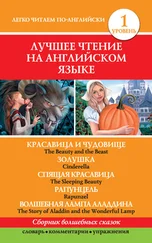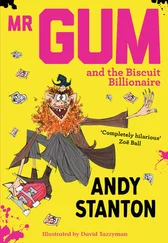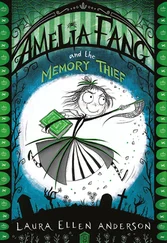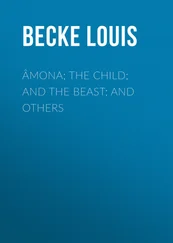In 1917, after the February Revolution and the abdication of the Tsar, the Provisional Government continued the war against Germany. Wanting to destabilize the Russian war effort, the German government provided Lenin with a sealed railway carriage and a large sum of money, enabling him to make his way from neutral Switzerland, across Germany, and into Russia. The Bolsheviks were, at the time, the only Russian political party unambiguously committed to making peace with Germany.
“Madame V——” probably refers to Anna Vyrubova (see List of Historical Figures ). Elsewhere in this memoir Teffi refers to her by name, but this may well be a minor inconsistency on her part.
Grigory (or Grisha) Rasputin is often referred to as a monk, but he never took holy orders and had no official connection to the Orthodox Church. Here Teffi uses the vaguer term “elder”. Rasputin was also rumoured to have belonged to an extreme sect known as the Khlysts, but this has never been proven. There is no doubt, however, that he lived the life of a religious “wanderer” for several years and was widely believed to be endowed with healing powers.
Often the subject of lurid speculation, the Khlysts observed ascetic practices and ecstatic rituals as a way of attaining grace.
A town fifteen miles from the centre of St Petersburg, the location of the Russian royal family’s summer palace.
After its acquisition by Alexey Suvorin in 1876, New Times ( Novoye Vremya ) became one of the most successful papers in Russia. Though reactionary and anti-Semitic, it published some of Russia’s most important writers, including Anton Chekhov.
The Orthodox term for the women who, early in the morning of the third day, came to Christ’s tomb and found it empty.
Alexey Filippov was a banker and the publisher of writings by Rasputin. Ivan Manasevich-Manuilov was a police agent. According to Edward Radzinsky, Manasevich-Manuilov had “suggested that Filippov organize a literary soirée, and he himself had told Tsarskoye Selo about the soirée, attributing the initiative to Filippov. And he had passed on to the security branch […] the list of literary invitees. All the people on it were well-known ‘leftist writers’. Which was why there had been a call from Tsarskoye Selo interrupting the meeting” ( Rasputin: The Last Word (London: Phoenix, 2000), p. 403). Manasevich-Manuilov had evidently wanted to compromise Filippov both in the eyes of the authorities and in the eyes of Rasputin himself. In the original, Teffi refers to Filippov and Manasevich-Manuilov only by their initial letters.
A tulup is a large sheepskin coat, usually worn by men. A zipun is a coat that flares from the waist, often seen as typically Cossack.
Shortly before the October Revolution the Bolsheviks made the Smolny, previously a government building, into their administrative headquarters.
Kangaroo was one of the furs used in military uniforms in Russia, together with squirrel and sheepskin. Ordinary soldiers usually had sheepskin collars.
A phrase used by Lenin to refer to the distribution of capital.
A term used in Marxist theory to describe the abandonment, as capitalism developed, of the collective solidarity characteristic of feudalism.
See “ New Life ”, note 31. Though most often used of right-wing violence against Jews, this term was also used of murderous rampages by revolutionary crowds.
Patriarch Nikon, the head of the Russian Orthodox Church, pronounced an anathema on the Bolsheviks in January 1918.
Bread rationing was introduced by the Provisional Government in March 1917, and bread continued to be rationed—as well as being adulterated with other substances—under “War Communism” (1918–21). In The Black Notebooks (her diary of the post-revolutionary period), Zinaida Gippius writes that “the ration of bread ‘with straw’ is ⅛ of a pound”, i.e. a little under two ounces per person (entry for February 1918).
See “ New Life ”, note 29.
An allusion to Genesis vii, where God tells Noah, “Of every clean beast thou shalt take to thee by sevens, the male and the female: and of beasts that are not clean by two, the male and the female.” In the biblical story, the beasts do not devour one another.
A reference to Bely’s “Memories of Blok”, published in Berlin in 1922–23. Merezhkovsky’s habit of wearing carpet slippers with pompoms is mentioned by several other memoirists.
From Nikolai Gogol’s story “Viy”.
In June 1940, as the German army advanced on Paris, around three quarters of the city’s population fled in panic. Many of the Russian émigrés went to Biarritz, though this too was soon under German occupation.
Merezhkovsky turned seventy-five on 14th August 1940. Zlobin writes in Difficult Soul that, to help them financially, their friends organized a birthday celebration which turned a profit of 7,000 francs.
Sobakyevich, an unscrupulous serf owner in Gogol’s Dead Souls , who, despite his name ( sobaka is the Russian for “dog”), resembles a bear.
Witch , a collection of stories with themes drawn from folklore and the supernatural, was published in 1936.
From Gogol’s “A Theatrical Journey” (“ Teatralny razezd ”), written in response to critics of his play The Government Inspector .
Teffi is referring to Merezhkovsky’s early poem “Sakya Muni” (1885), in which a poor thief berates the Buddha for preventing him from stealing one of the Buddha’s gems: the Buddha is immortal and has no need of gems—so why should he deny a mortal thief a way to earn his crust of bread?
Throughout his émigré years Merezhkovsky had been hoping to find a strong ruler who could save Europe from Bolshevism. At one time he had placed his hopes in Mussolini, who had sponsored his book about Dante (1939). Merezhkovsky met Mussolini several times. In one of his letters to him he wrote, “The best, the truest and the liveliest document on Dante is—your personality. […] Visualize Mussolini in contemplation, and it’s Dante. Imagine Dante in action, and it’s Mussolini” (Vadim Polonsky, “Merezhkovsky, Dmitry Sergeyevich”, www.krugosvet.ru.; retrieved 2nd February 2010).
In 1910 this publishing house (Shipovnik) had published Teffi’s first two books—a collection of poems and a collection of stories.
First published in December 1915—a story about an exceptionally fatuous man whose repeated expressions of wonder at life’s everyday miracles bore and exasperate not only his wife but also his small children.
All four artists emigrated after the Revolution. Teffi’s Memories includes a brief mention of Schleifer and longer mentions of Yakovlev. The whereabouts of these portraits are unknown; probably they have not survived.
Читать дальше












